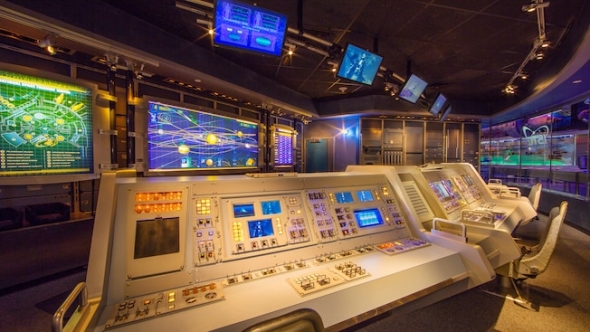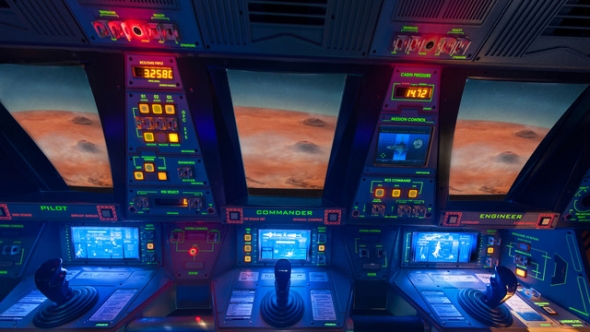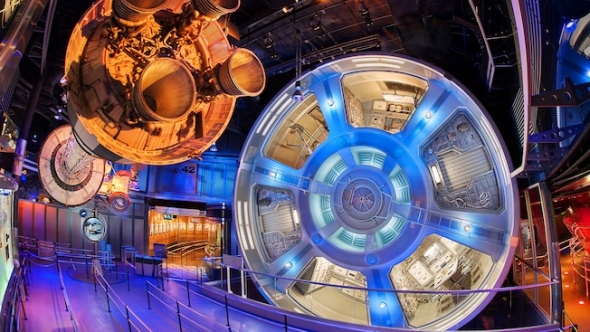
The ambition of Imagineers is limitless. During the so-called Blue Sky phase, they dream the impossible. Then, these tireless professionals spend years turning dreams into reality. Sometimes, the best-laid plans don't work out quite like park planners anticipated, though. Let's go Behind the Ride to learn why Mission: SPACE proved too realistic for some and what Imagineers did to solve the problem.
The experience: The most realistic astronaut experience ever built
The trick: Using NASA employees to guide development
Image: DisneyDid you know that NASA.gov still has a webpage that discusses the development of Mission: SPACE? Yes, more than 15 years after the fact, the foremost experts in outer space are still that proud of this attraction. Disney Imagineers are similarly passionate about a project that has earned its fair share of notoriety. Everyone involved with this ride understands that all of the unfortunate negatives somehow prove a point. Not all of us are built for space travel.
From the beginning, Walt Disney and his staff at WED Enterprises loved everything about the Space Race. It was a proud part of American culture during the 1950s and 1960s, eventually concluding when Neil Armstrong became the first human being to walk on the Moon.
Several Disney attractions have celebrated space travel over the years, most notably Space Mountain and Mission to Mars, the latter of which was previously known as Rocket to the Moon. As humankind conquered more aspects of lunar exploration, Disney updated their rides to reflect our advances in knowledge.
Image: DisneyThe early plans for Epcot had included a space pavilion. The 1977 Walt Disney Company Annual Report mentions this pavilion even though Epcot itself wouldn’t open for another five years. More than a decade passed before plans for a space pavilion advanced. Disney announced Journeys in Space in 1990. This new pavilion would feature “the ultimate thrill-ride.” Or it would have if park officials hadn’t canceled the project.
Throughout the planning phase for the undeveloped space pavilion, Imagineers liaised with astronauts and other NASA experts. The parties were equally intrigued by one another and fully intended to work on a project together someday. Yes, that project became Mission: SPACE, which would debut in 2003.
Disney went to Johnson Space Center’s Public Affairs Office, and they spoke with several high-level Mission Control employees. Imagineers planned an attraction that would recreate the experience of escaping gravity and entering the Earth’s orbit.
Image: DisneyOver time, the idea evolved into a mission to Mars, just like the 1970s attraction. This one would be a state-of-the-art attraction using computer graphics to mimic space travel and a landing on another planet. Disney officials traveled to the Jet Propulsion Laboratory to learn the most accurate data about Mars’ appearance. This was just one of many steps they took to make the ride experience as realistic as possible.
Disney spoke with so many people from NASA that the federal agency took an active interest in Mission: SPACE. Astronauts from several missions including Apollo, Mercury, and Gemini appeared at the attraction's grand opening. Others watched via satellite. These astronauts were extraordinary because they were IN SPACE at the time. Yes, Disney hooked up the International Space Station with a satellite feed of the event. It seemed like everyone who was anyone in NASA participated in some form.




Add new comment